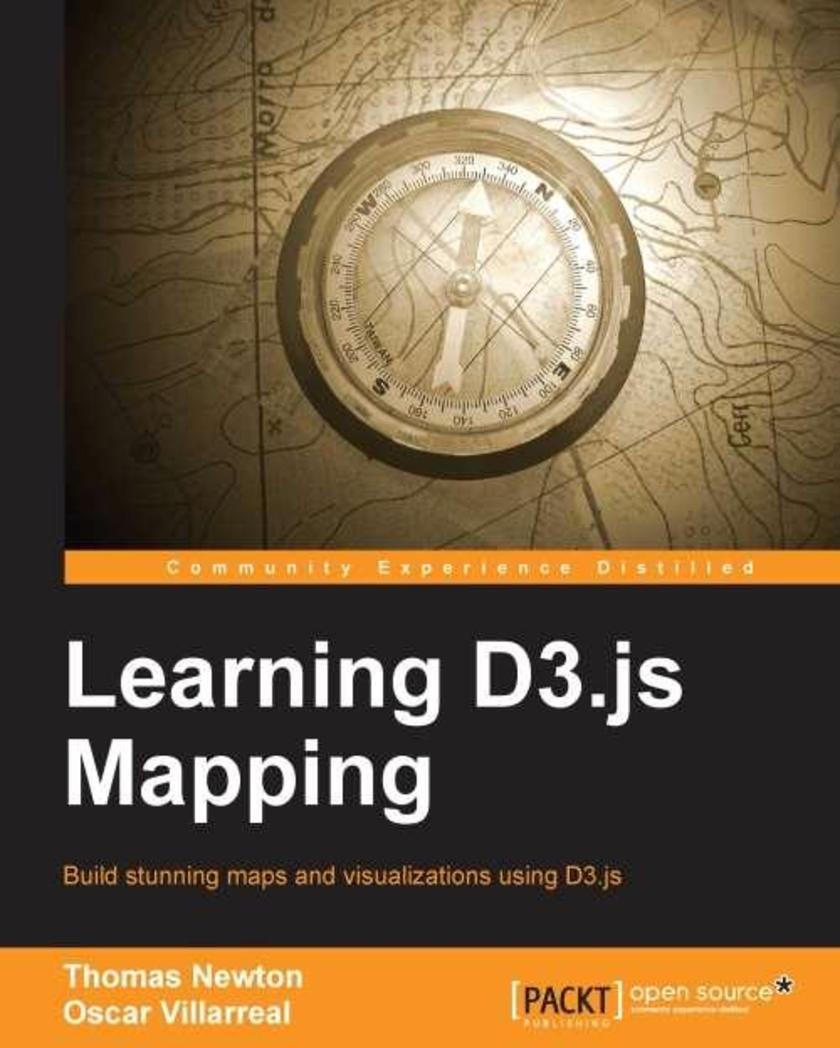
Learning D3.js Mapping
¥45.77
If you are interested in creating maps for the web GIS data, this book is for you. Familiarity with D3.js will be helpful but is not necessary.
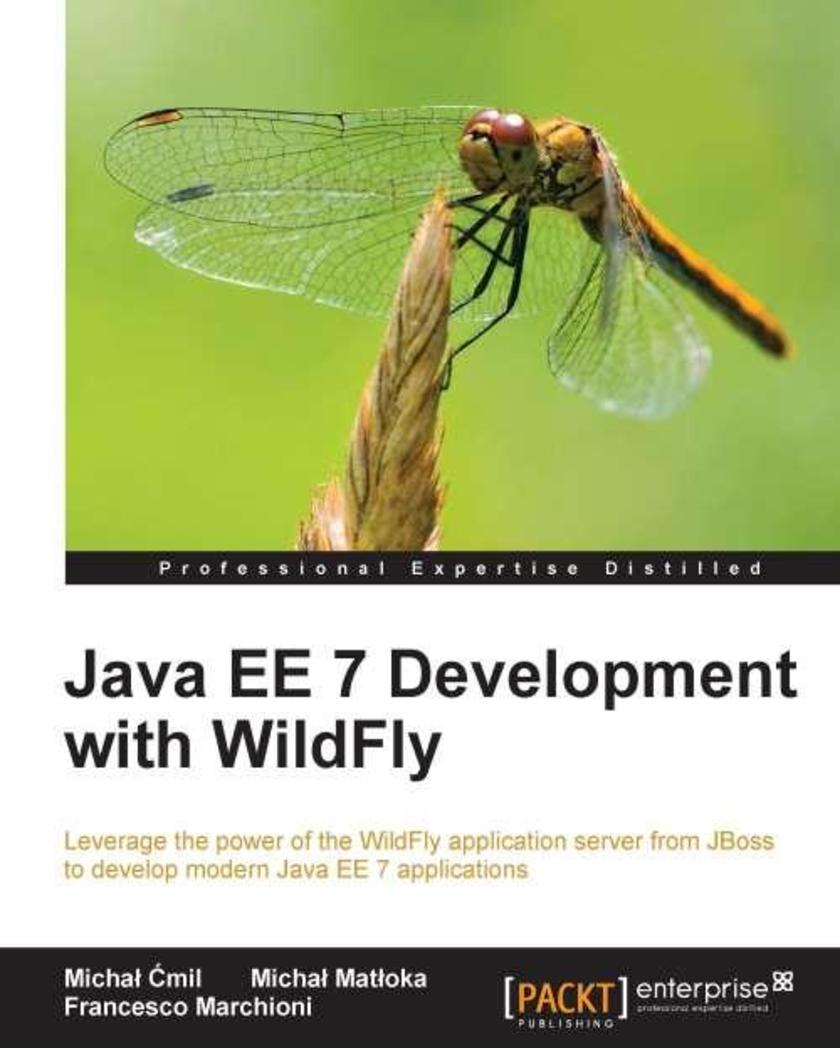
Java EE 7 Development with WildFly
¥90.46
If you are a Java developer who wants to learn about Java EE, this is the book for you. It's also ideal for developers who already have experience with the Java EE platform but would like to learn more about the new Java EE 7 features by analyzing fully functional sample applications using the new application server WildFly.
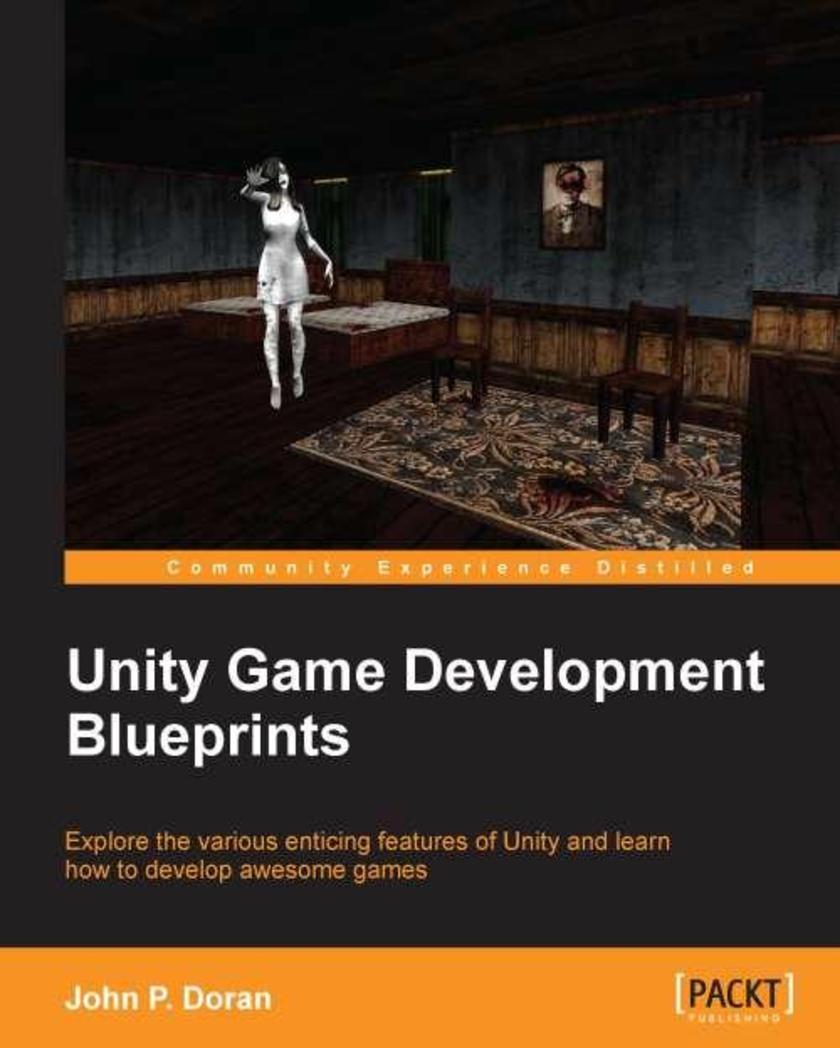
Unity Game Development Blueprints
¥80.65
If you want to build enticing projects with Unity, this book is for you. Readers who are familiar with the basics of how to create simple projects in Unity will have an easier time.
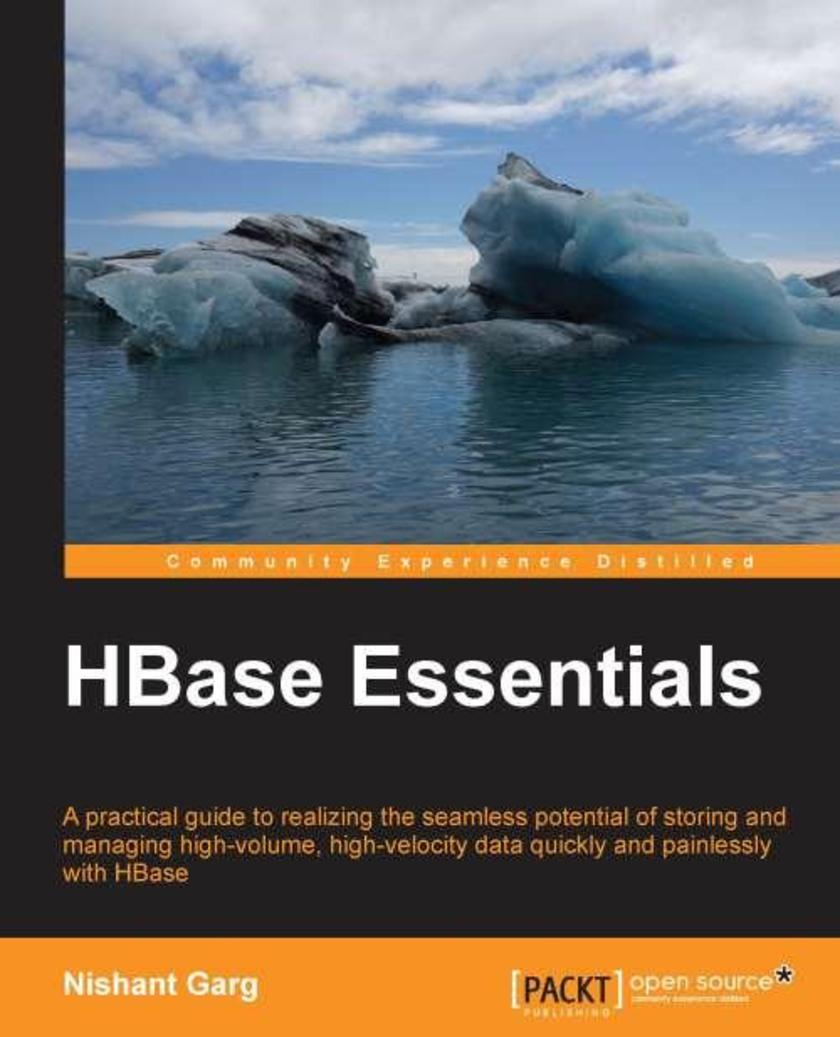
HBase Essentials
¥63.21
This book is intended for developers and Big Data engineers who want to know all about HBase at a hands-on level. For in-depth understanding, it would be helpful to have a bit of familiarity with HDFS and MapReduce programming concepts with no prior experience with HBase or similar technologies. This book is also for Big Data enthusiasts and database developers who have worked with other NoSQL databases and now want to explore HBase as another futuristic, scalable database solution in the Big Data space.

Flask Framework Cookbook
¥79.56
If you are a web developer who wants to learn more about developing applications in Flask and scale them with industry-standard practices, this is the book for you. This book will also act as a handy tool if you are aware of Flask's major extensions and want to make the best use of them. It is assumed that you have knowledge of Python and a basic understanding of Flask. If you are completely new to Flask, reading the book from the first chapter and going forward will help in getting acquainted with Flask as you go ahead.
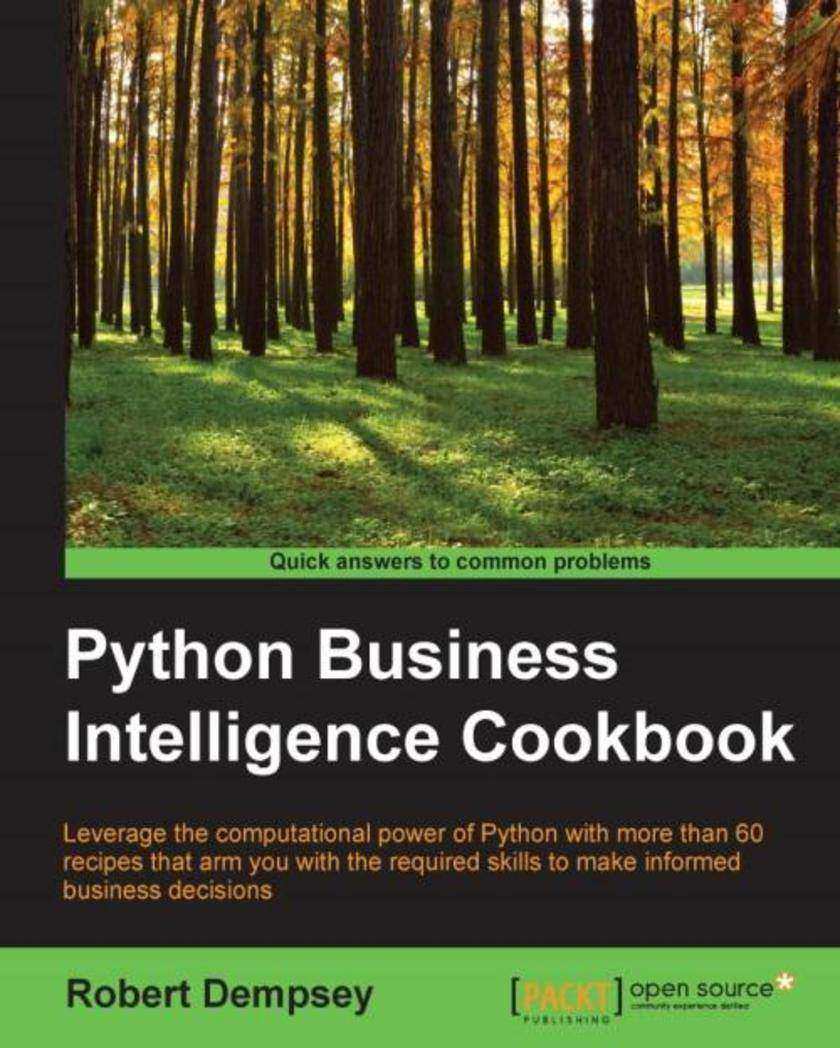
Python Business Intelligence Cookbook
¥71.93
Leverage the computational power of Python with more than 60 recipes that arm you with the required skills to make informed business decisions About This Book Want to minimize risk and optimize profits of your businessLearn to create efficient analytical reports with ease using this highly practical, easy-to-follow guide Learn to apply Python for business intelligence tasks—preparing, exploring, analyzing, visualizing and reporting—in order to make more informed business decisions using data at hand Learn to explore and analyze business data, and build business intelligence dashboards with the help of various insightful recipes Who This Book Is For This book is intended for data analysts, managers, and executives with a basic knowledge of Python, who now want to use Python for their BI tasks. If you have a good knowledge and understanding of BI applications and have a “working” system in place, this book will enhance your toolbox. What You Will Learn Install Anaconda, MongoDB, and everything you need to get started with your data analysis Prepare data for analysis by querying cleaning and standardizing data Explore your data by creating a Pandas data frame from MongoDB Gain powerful insights, both statistical and predictive, to make informed business decisions Visualize your data by building dashboards and generating reports Create a complete data processing and business intelligence system In Detail The amount of data produced by businesses and devices is going nowhere but up. In this scenario, the major advantage of Python is that it's a general-purpose language and gives you a lot of flexibility in data structures. Python is an excellent tool for more specialized analysis tasks, and is powered with related libraries to process data streams, to visualize datasets, and to carry out scientific calculations. Using Python for business intelligence (BI) can help you solve tricky problems in one go. Rather than spending day after day scouring Internet forums for “how-to” information, here you’ll find more than 60 recipes that take you through the entire process of creating actionable intelligence from your raw data, no matter what shape or form it’s in. Within the first 30 minutes of opening this book, you’ll learn how to use the latest in Python and NoSQL databases to glean insights from data just waiting to be exploited.< We’ll begin with a quick-fire introduction to Python for BI and show you what problems Python solves. From there, we move on to working with a predefined data set to extract data as per business requirements, using the Pandas library and MongoDB as our storage engine. Next, we will analyze data and perform transformations for BI with Python. Through this, you will gather insightful data that will help you make informed decisions for your business. The final part of the book will show you the most important task of BI—visualizing data by building stunning dashboards using Matplotlib, PyTables, and iPython Notebook. Style and approach This is a step-by-step guide to help you prepare, explore, analyze and report data, written in a conversational tone to make it easy to grasp. Whether you’re new to BI or are looking for a better way to work, you’ll find the knowledge and skills here to get your job done efficiently.
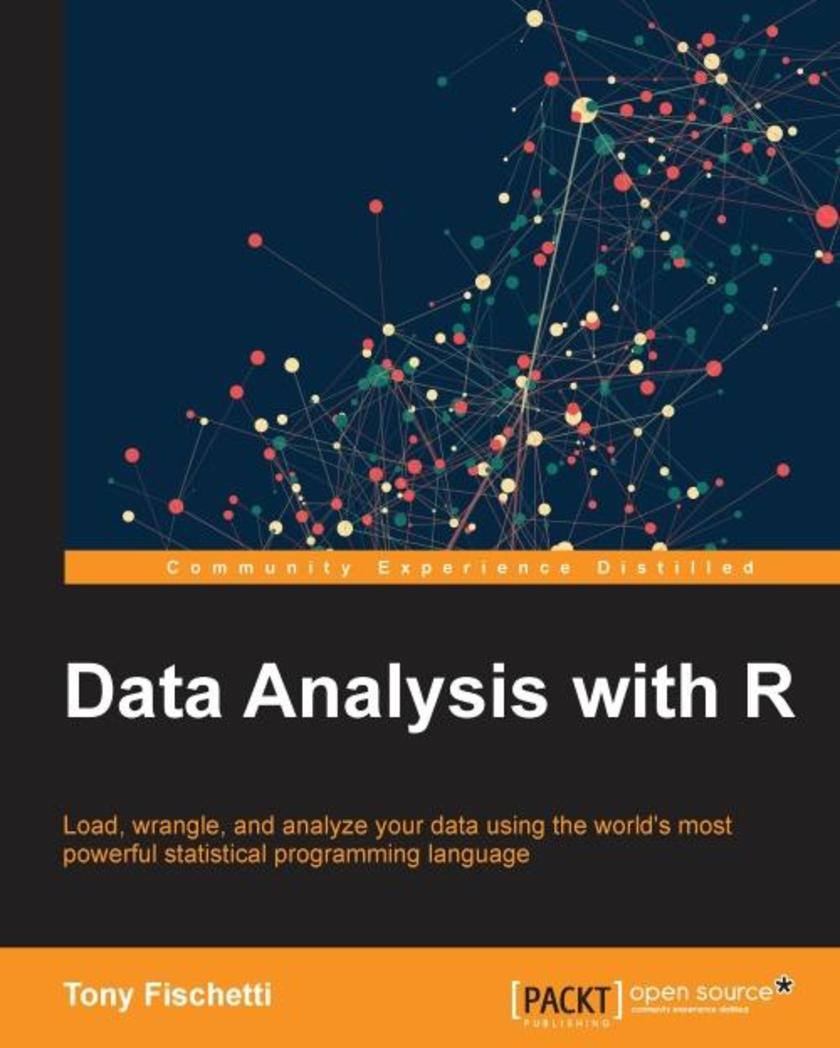
Data Analysis with R
¥99.18
Load, wrangle, and analyze your data using the world's most powerful statistical programming language About This Book Load, manipulate and analyze data from different sources Gain a deeper understanding of fundamentals of applied statistics A practical guide to performing data analysis in practice Who This Book Is For Whether you are learning data analysis for the first time, or you want to deepen the understanding you already have, this book will prove to an invaluable resource. If you are looking for a book to bring you all the way through the fundamentals to the application of advanced and effective analytics methodologies, and have some prior programming experience and a mathematical background, then this is for you. What You Will Learn Navigate the R environment Describe and visualize the behavior of data and relationships between data Gain a thorough understanding of statistical reasoning and sampling Employ hypothesis tests to draw inferences from your data Learn Bayesian methods for estimating parameters Perform regression to predict continuous variables Apply powerful classification methods to predict categorical data Handle missing data gracefully using multiple imputation Identify and manage problematic data points Employ parallelization and Rcpp to scale your analyses to larger data Put best practices into effect to make your job easier and facilitate reproducibility In Detail Frequently the tool of choice for academics, R has spread deep into the private sector and can be found in the production pipelines at some of the most advanced and successful enterprises. The power and domain-specificity of R allows the user to express complex analytics easily, quickly, and succinctly. With over 7,000 user contributed packages, it’s easy to find support for the latest and greatest algorithms and techniques. Starting with the basics of R and statistical reasoning, Data Analysis with R dives into advanced predictive analytics, showing how to apply those techniques to real-world data though with real-world examples. Packed with engaging problems and exercises, this book begins with a review of R and its syntax. From there, get to grips with the fundamentals of applied statistics and build on this knowledge to perform sophisticated and powerful analytics. Solve the difficulties relating to performing data analysis in practice and find solutions to working with “messy data”, large data, communicating results, and facilitating reproducibility. This book is engineered to be an invaluable resource through many stages of anyone’s career as a data analyst. Style and approach Learn data analysis using engaging examples and fun exercises, and with a gentle and friendly but comprehensive "learn-by-doing" approach.

GameMaker Cookbook
¥80.65
Over 50 hands-on recipes to help you build exhilarating games using the robust GameMaker system About This Book Design and develop game elements that can be used alone or stacked to enhance your gaming experience Explore extensions that can unlock GameMaker: Studio’s true potential to create complex games A recipe-based, easy-to-follow guide to take your GameMaker skills to the next level Who This Book Is For This book is intended for GameMaker: Studio enthusiasts who are looking to add more substance and improve their content. If know your way around the program and have some basic GML skills but want to take them further, then this book is for you. What You Will Learn Set up player control schemes of various types, such as touch controls and a gamepad Create your own physics sandbox Get accustomed to advanced player movement Implement music and 3D sound in your games Utilize GameMaker’s GUI layers to create exciting games Generate adjustable game settings and save systems Add depth to your game with lighting and special effects In Detail GameMaker: Studio started off as a tool capable of creating simple games using a drag-and-drop interface. Since then, it has grown to become a powerful instrument to make release-ready games for PC, Mac, mobile devices, and even current-gen consoles. GameMaker is designed to allow its users to develop games without having to learn any of the complex programming languages such as C++ or Java. It also allows redistribution across multiple platforms. This book teaches you to harness GameMaker: Studio’s full potential and take your game development to new heights. It begins by covering the basics and lays a solid foundation for advanced GameMaker concepts. Moving on, it covers topics such as controls, physics, and advanced movement, employing a strategic approach to the learning curve. The book concludes by providing insights into complex concepts such as the GUI, menus, save system, lighting, particles, and VFX. By the end of the book, you will be able to design games using GameMaker: Studio and implement the same techniques in other games you intend to design. Style and approach A problem-solving guide that teaches you the construction of game elements and mechanics to be integrated in games for rapid prototyping. Each overall topic includes several individual recipes taught through step-by-step instructions, and in-depth follow-up with examples.
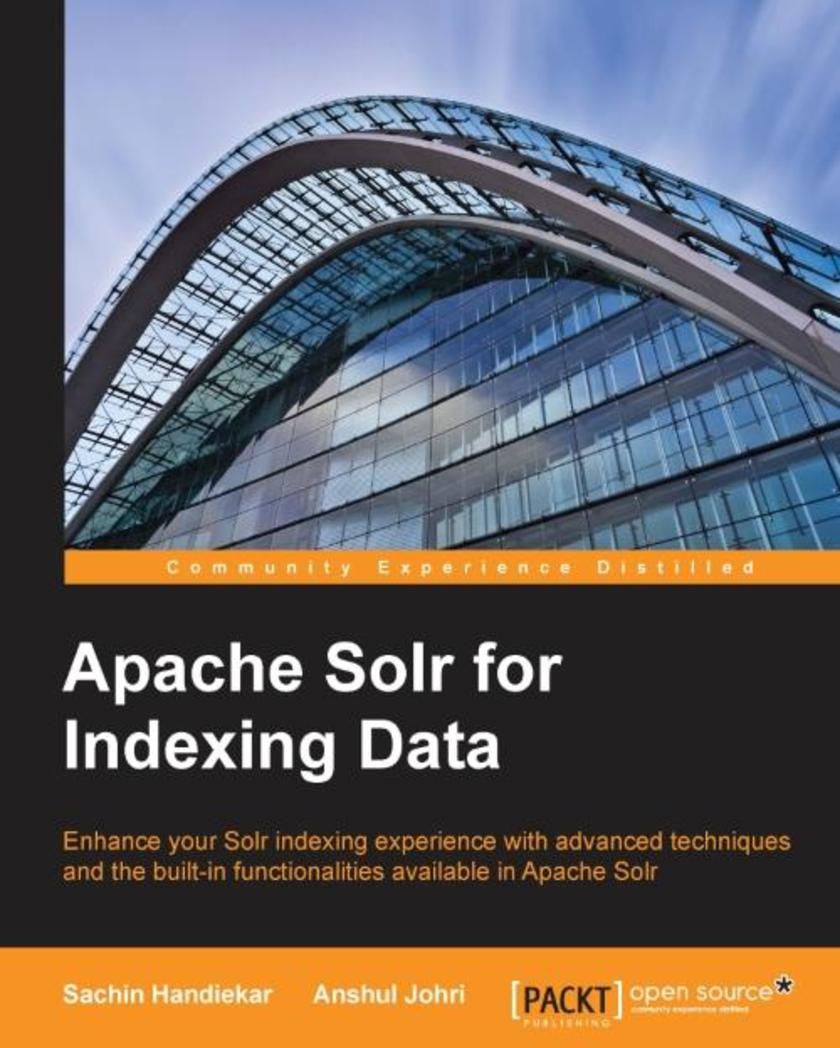
Apache Solr for Indexing Data
¥63.21
Enhance your Solr indexing experience with advanced techniques and the built-in functionalities available in Apache Solr About This Book Learn about distributed indexing and real-time optimization to change index data on fly Index data from various sources and web crawlers using built-in analyzers and tokenizers This step-by-step guide is packed with real-life examples on indexing data Who This Book Is For This book is for developers who want to increase their experience of indexing in Solr by learning about the various index handlers, analyzers, and methods available in Solr. Beginner level Solr development skills are expected. What You Will Learn Get to know the basic features of Solr indexing and the analyzers/tokenizers available Index XML/JSON data in Solr using the HTTP Post tool and CURL command Work with Data Import Handler to index data from a database Use Apache Tika with Solr to index word documents, PDFs, and much more Utilize Apache Nutch and Solr integration to index crawled data from web pages Update indexes in real-time data feeds Discover techniques to index multi-language and distributed data in Solr Combine the various indexing techniques into a real-life working example of an online shopping web application In Detail Apache Solr is a widely used, open source enterprise search server that delivers powerful indexing and searching features. These features help fetch relevant information from various sources and documentation. Solr also combines with other open source tools such as Apache Tika and Apache Nutch to provide more powerful features. This fast-paced guide starts by helping you set up Solr and get acquainted with its basic building blocks, to give you a better understanding of Solr indexing. You’ll quickly move on to indexing text and boosting the indexing time. Next, you’ll focus on basic indexing techniques, various index handlers designed to modify documents, and indexing a structured data source through Data Import Handler. Moving on, you will learn techniques to perform real-time indexing and atomic updates, as well as more advanced indexing techniques such as de-duplication. Later on, we’ll help you set up a cluster of Solr servers that combine fault tolerance and high availability. You will also gain insights into working scenarios of different aspects of Solr and how to use Solr with e-commerce data. By the end of the book, you will be competent and confident working with indexing and will have a good knowledge base to efficiently program elements. Style and approach This fast-paced guide is packed with examples that are written in an easy-to-follow style, and are accompanied by detailed explanation. Working examples are included to help you get better results for your applications.
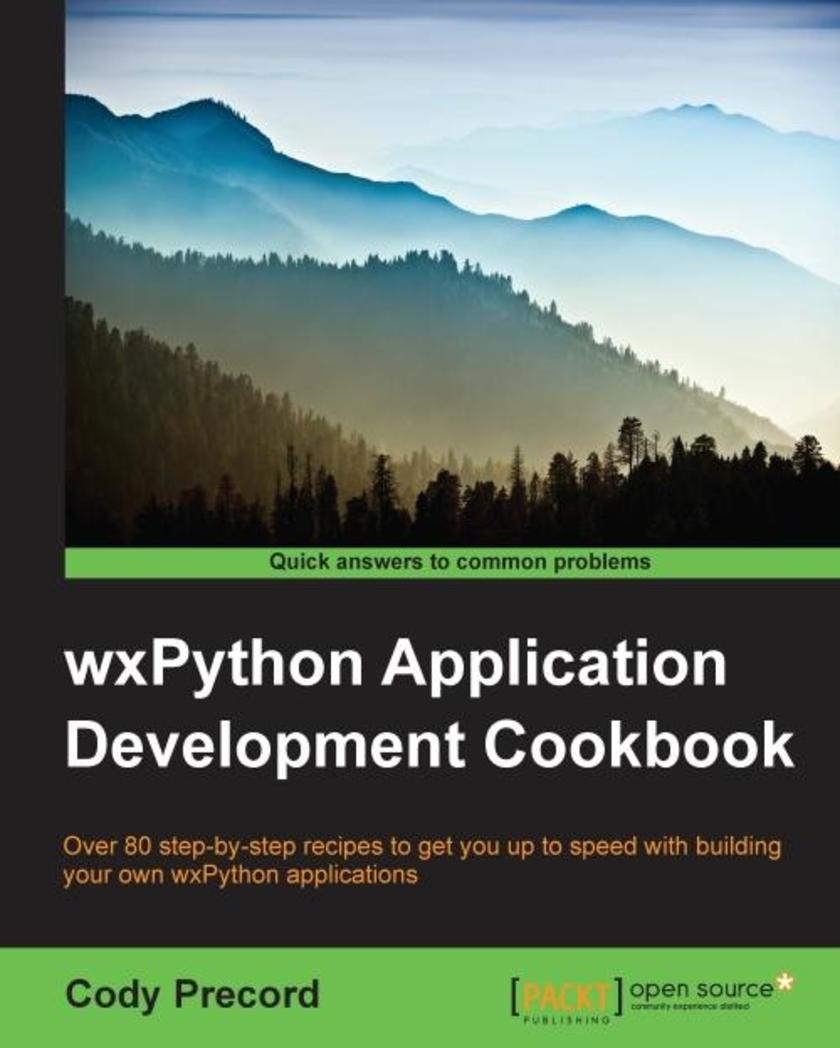
wxPython Application Development Cookbook
¥80.65
Over 80 step-by-step recipes to get you up to speed with building your own wxPython applications About This Book This book empowers you to create rich cross-platform graphical user interfaces using Python It helps you develop applications that can be deployed on Windows, OSX, and Linux The recipes in the book involve real-world applications, giving you a first-hand experience of the practical scenarios Who This Book Is For For those who are familiar with programming in Python and want to start building applications with graphical user interfaces, this book will get you up and running quickly. A basic understanding of the Python programming language and object-oriented concepts are all that is needed. What You Will Learn Create full featured user interfaces Design and develop custom controls Deploy and distribute wxPython applications to Windows, Macintosh OS X, Linux, and other UNIX-like environments Handle and respond to application events Manage and display data using grids Interact with web services from your GUI Use Paint events to draw custom displays Support the display of user interfaces in multiple languages In Detail wxPython is a GUI toolkit for the Python programming language built on top of the cross-platform wxWidgets GUI libraries. wxPython provides a powerful set of tools that allow you to quickly and efficiently building applications that can run on a variety of different platforms. Since wxWidgets provides a wrapper around each platform’s native GUI toolkit, the applications built with wxPython will have a native look and feel wherever they are deployed. This book will provide you with the skills to build highly functional and native looking user interfaces for Python applications on multiple operating system environments. By working through the recipes, you will gain insights into and exposure to creating applications using wxPython. With a wide range of topics covered in the book, there are recipes to get the most basic of beginners started in GUI programming as well as tips to help experienced users get more out of their applications. The recipes will take you from the most basic application constructs all the way through to the deployment of complete applications. Style and approach This book is a collection of step-by-step recipes that introduce the various components and concepts of wxPython in a conversational and easy-to-follow way. Each recipe contains coded examples along with detailed explanations about the key points of each topic. Each topic is designed to introduce and show you how to use a single feature from the wxPython library.
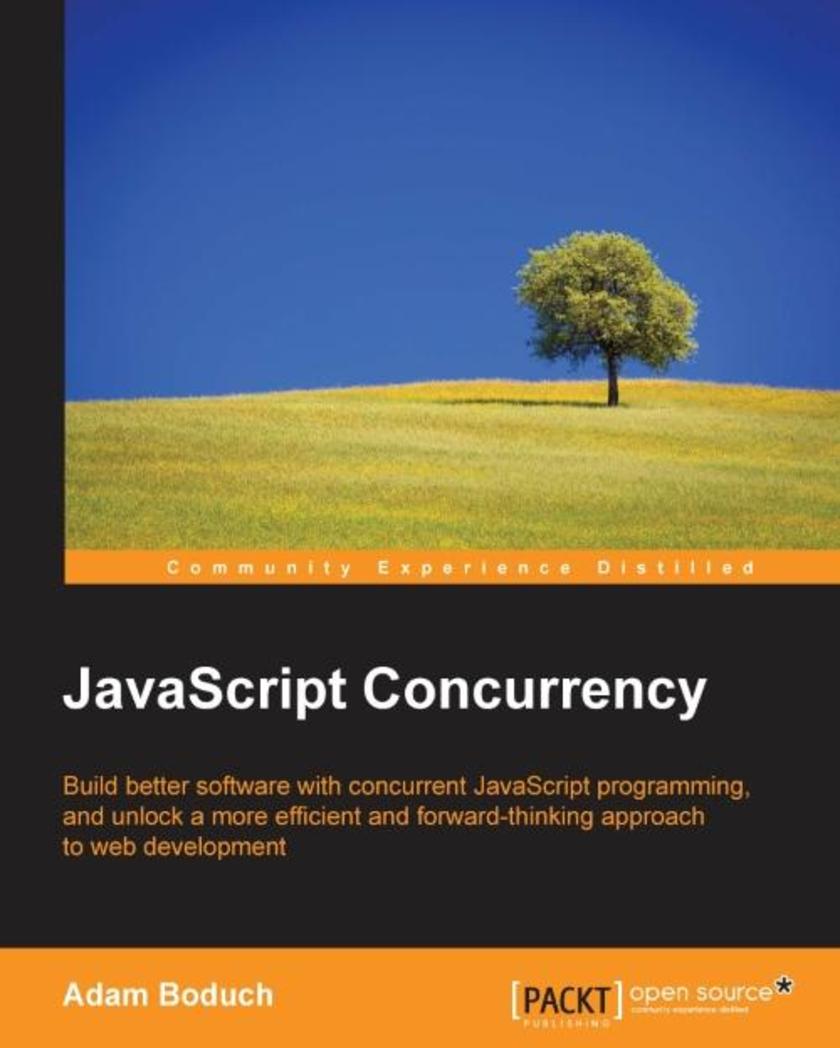
JavaScript Concurrency
¥80.65
Build better software with concurrent JavaScript programming, and unlock a more efficient and forward thinking approach to web development About This Book Apply the core principles of concurrency to both browser and server side development Explore the latest tools and techniques at the forefront of concurrent programming, including JavaScript promises, web workers, and generators Learn how concurrent and parallel programming can help you tackle the challenges of fast, data heavy web development Who This Book Is For JavaScript Concurrency is written for any JavaScript developer who wants to learn how to write more efficient, powerful, and maintainable applications that utilize the latest developments in the JavaScript language. All aspects of concurrent, asynchronous, and parallel programming are covered from first principles and by the end of the book you’ll be able to create a fully-worked application that leverages all the topics covered in the book. What You Will Learn Understand exactly how JavaScript works in a web browser environment, and how these mechanisms power our event-driven JavaScript code Use promises to turn complex synchronization scenarios into readable and maintainable values Compute values lazily and avoid unnecessary memory allocations using generators. Write concurrent code that doesn’t feel like concurrent code by abstracting away boilerplate chores Leverage true hardware parallelism with web workers to get a better performance Get to grips with the NodeJS model of concurrency and learn why it’s good for I/O-intensive web applications In Detail Concurrent programming may sound abstract and complex, but it helps to deliver a better user experience. With single threaded JavaScript, applications lack dynamism. This means that when JavaScript code is running, nothing else can happen. The DOM can’t update, which means the UI freezes. In a world where users expect speed and responsiveness – in all senses of the word – this is something no developer can afford. Fortunately, JavaScript has evolved to adopt concurrent capabilities – one of the reasons why it is still at the forefront of modern web development. This book helps you dive into concurrent JavaScript, and demonstrates how to apply its core principles and key techniques and tools to a range of complex development challenges. Built around the three core principles of concurrency – parallelism, synchronization, and conservation – you’ll learn everything you need to unlock a more efficient and dynamic JavaScript, to lay the foundations of even better user experiences. Throughout the book you’ll learn how to put these principles into action by using a range of development approaches. Covering everything from JavaScript promises, web workers, generators and functional programming techniques, everything you learn will have a real impact on the performance of your applications. You’ll also learn how to move between client and server, for a more frictionless and fully realized approach to development. With further guidance on concurrent programming with Node.js, JavaScript Concurrency is committed to making you a better web developer. The best developers know that great design is about more than the UI – with concurrency, you can be confident every your project will be expertly designed to guarantee its dynamism and power. Style and approach Beginning with the fundamentals of concurrency and how they apply to JavaScript development, the book then takes you through the relevant constructs that will help you implement concurrent code. You’ll learn how even the most abstract and theoretical aspects of concurrent programming help you solve real world challenges, with clear and practical demonstrations that show you how concurrent JavaScript will make you a better developer.
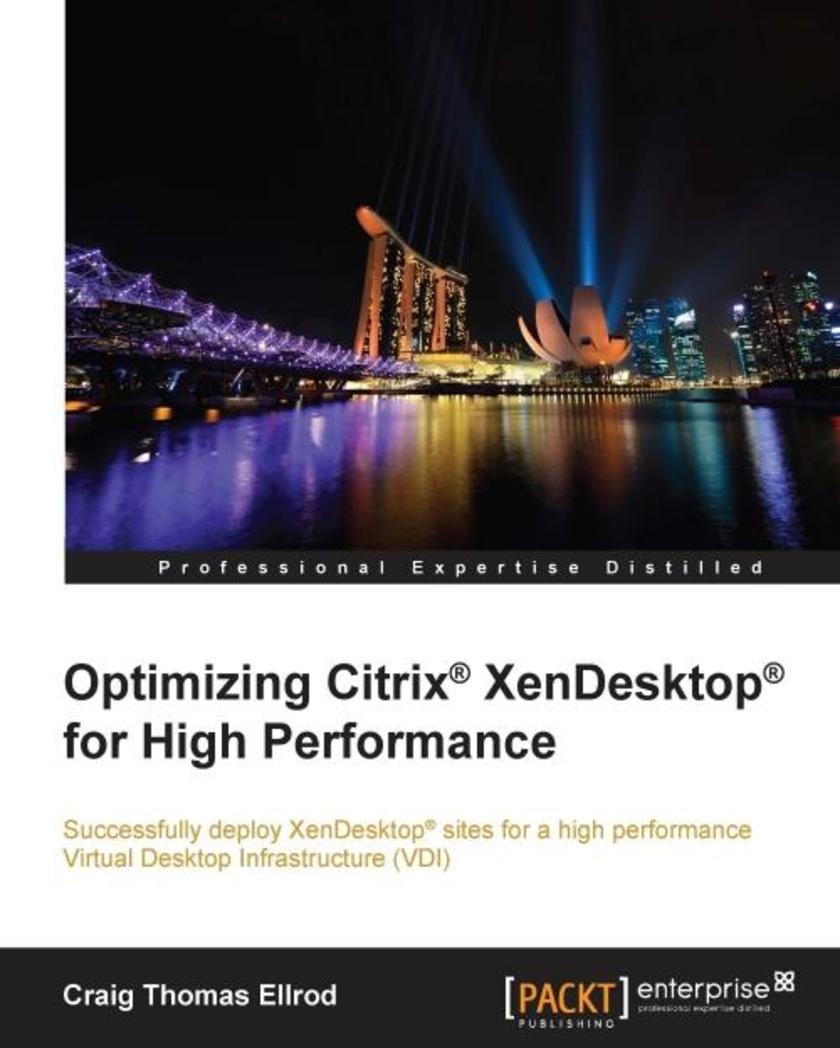
Optimizing Citrix? XenDesktop? for High Performance
¥90.46
Successfully deploy XenDesktop sites for a high performance Virtual Desktop Infrastructure (VDI) About This Book Size the VDI environment so the administrator has breathing room to design and build their XenDesktop systems efficiently Use desktop virtualization tools to provide users fast, convenient access to their Windows Desktops Understand the key pinch points in the resource layers such as; the Client layer, Network Layer, Access Layer, Control Layer, Services Layer and Resources Layer Who This Book Is For Citrix XenDesktop High Performance is written for administrators who would like to deploy Citrix XenDesktop in their enterprises with the aim of providing high efficiency. Basic familiarity with Citrix XenDesktop is assumed. What You Will Learn Understand key concepts, terminology, and system requirements Discover how components work in regards to virtualization and performance Identify architectural resource layers and components Explore the hypervisor virtualization software that runs on top of the hardware and learn how to tune it for maximum performance Analyze client hardware and software, including thin clients and mobile devices In Detail Citrix XenDesktop is a suite of desktop virtualization tools designed to provide users with fast and convenient access to their Windows desktops and applications through any device. Virtual desktops mean that rather than setting up hundreds or thousands of individual computers in an enterprise, companies can instead opt to create servers with large amounts of memory, disk, and processing resources, and use virtualization to offer these resources to end users. The result of this is that users are provided with an experience that appears to be identical to having an individual desktop PC. Each user has some disk space, processor time, and memory allocated to them, as though it is present on their own physical machine, when in reality, the resources are physically present on a centralized server. This book starts by answering the basic questions you need to ask when considering XenDesktop, followed by methods of how you can properly size your server infrastructure for XenDesktop. You’ll discover how to optimize the virtual machines used in XenDesktop, how to optimize your network for XenDesktop, and how to optimize the hypervisor and the cloud. You’ll also learn how to monitor XenDesktop to maximize performance. By the end of the book, you will be able to plan, design, build, and deploy high performance XenDesktop Virtualization systems in enterprises. You will also know how to monitor and maintain your systems to ensure smooth operation. Style and approach This book is an all-inclusive guide that uncovers hidden and previously unpublished performance improvement areas for any XenDesktop site.
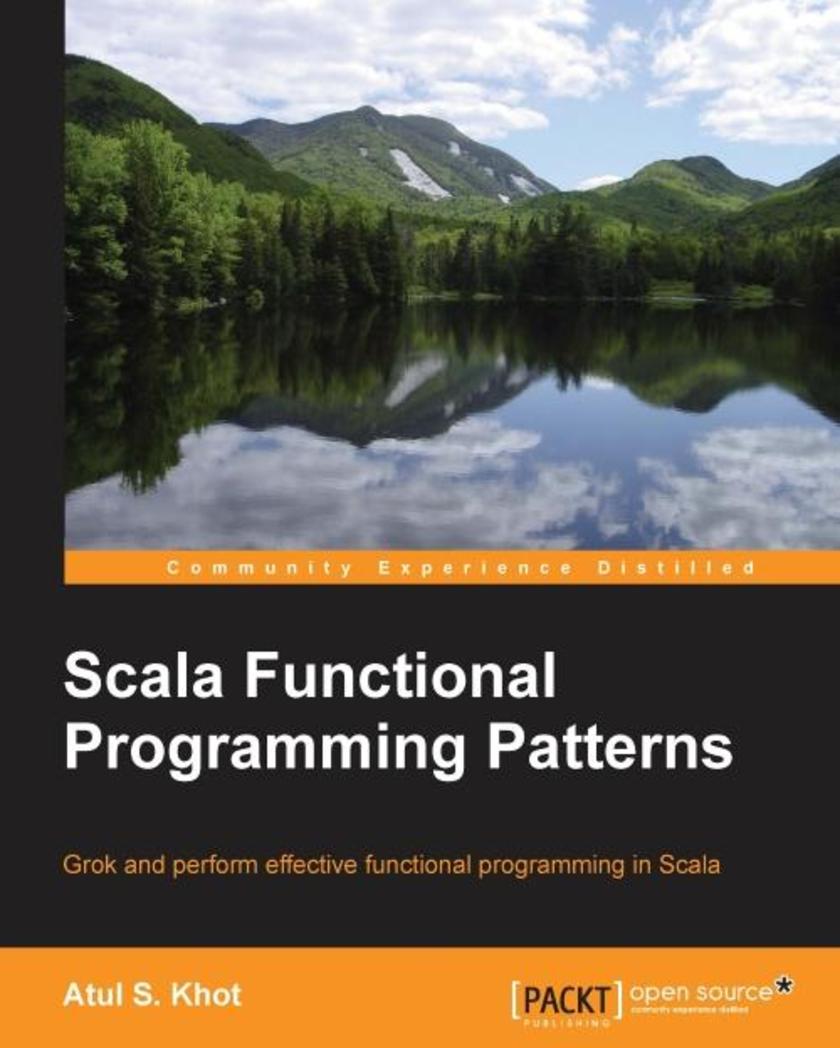
Scala Functional Programming Patterns
¥90.46
Grok and perform effective functional programming in Scala About This Book Understand functional programming patterns by comparing them with the traditional object-oriented design patterns Write robust, safer, and better code using the declarative programming paradigm An illustrative guide for programmers to create functional programming patterns with Scala Who This Book Is For If you have done Java programming before and have a basic knowledge of Scala and its syntax, then this book is an ideal choice to help you to understand the context, the traditional design pattern applicable, and the Scala way. Having previous knowledge of design patterns will help, though it is not strictly necessary. What You Will Learn Get to know about functional programming and the value Scala's FP idioms bring to the table Solve day-to-day programming problems using functional programming idioms Cut down the boiler-plate and express patterns simply and elegantly using Scala's concise syntax Tame system complexity by reducing the moving parts Write easier to reason about concurrent code using the actor paradigm and the Akka library Apply recursive thinking and understand how to create solutions without mutation Reuse existing code to compose new behavior Combine the object-oriented and functional programming approaches for effective programming using Scala In Detail Scala is used to construct elegant class hierarchies for maximum code reuse and extensibility and to implement their behavior using higher-order functions. Its functional programming (FP) features are a boon to help you design “easy to reason about” systems to control the growing software complexities. Knowing how and where to apply the many Scala techniques is challenging. Looking at Scala best practices in the context of what you already know helps you grasp these concepts quickly, and helps you see where and why to use them. This book begins with the rationale behind patterns to help you understand where and why each pattern is applied. You will discover what tail recursion brings to your table and will get an understanding of how to create solutions without mutations. We then explain the concept of memorization and infinite sequences for on-demand computation. Further, the book takes you through Scala’s stackable traits and dependency injection, a popular technique to produce loosely-coupled software systems. You will also explore how to currying favors to your code and how to simplify it by de-construction via pattern matching. We also show you how to do pipeline transformations using higher order functions such as the pipes and filters pattern. Then we guide you through the increasing importance of concurrent programming and the pitfalls of traditional code concurrency. Lastly, the book takes a paradigm shift to show you the different techniques that functional programming brings to your plate. This book is an invaluable source to help you understand and perform functional programming and solve common programming problems using Scala’s programming patterns. Style and approach This is a hands-on guide to Scala's game-changing features for programming. It is filled with many code examples and figures that illustrate various Scala idioms and best practices.
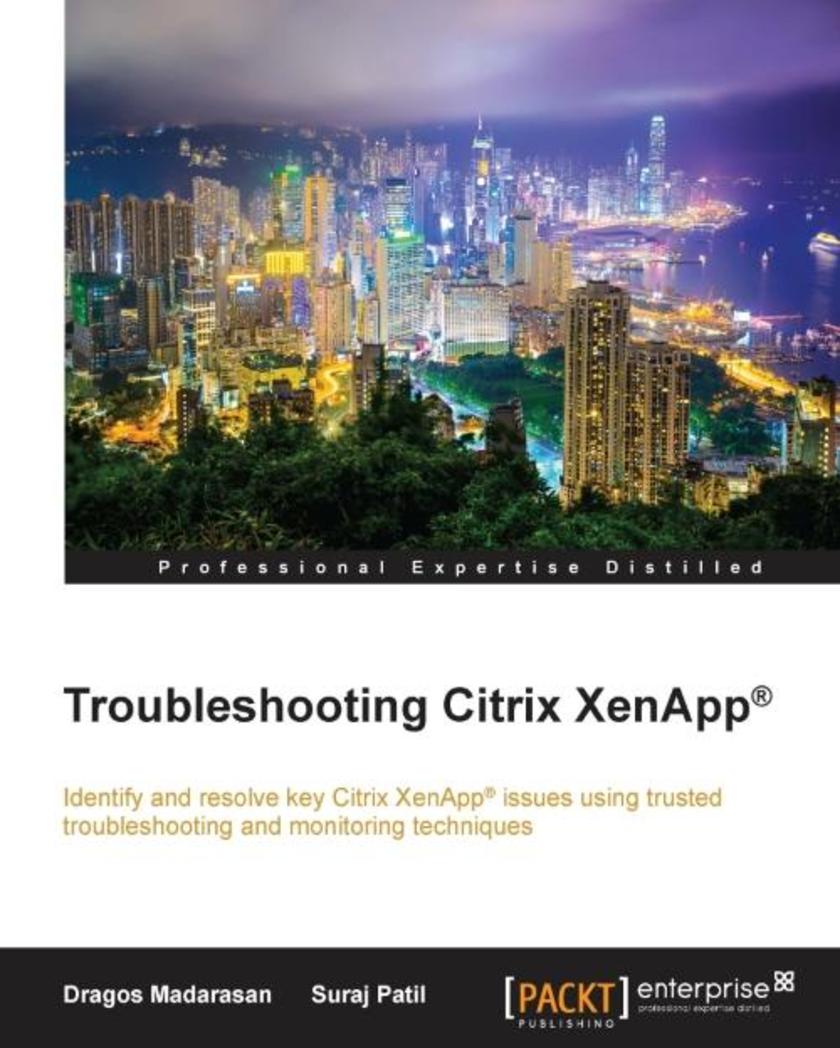
Troubleshooting Citrix XenApp?
¥63.21
Identify and resolve key Citrix XenAppissues using trusted troubleshooting and monitoring techniques About This BookUnderstand the key troubleshooting methodologies when working with XenApp 7.5 version and aboveUncover effective tips and techniques to solve real-world XenAppinfrastructure problemsThis is a fast-paced guide to developing key troubleshooting and problem resolution skills you can put to use in a Citrix environmentWho This Book Is ForThis book is for Citrix Administrators or Citrix Engineers who are currently managing Citrix XenAppin a production environment and want to learn how to troubleshoot XenAppissues in the shortest possible time. It is assumed that you have a basic understanding of XenApp’s components and how to implement and manage a XenAppinfrastructure.What You Will LearnGet to know about troubleshooting methodologies and perform a root cause analysis of the problemUnderstand the individual components and interactions required for a successful XenApp environmentsIdentify and troubleshoot issues around the core Citrix componentsIdentify XenAppcomponents and their roles and learn how they interact with the communication channelsGain tips and tricks to optimize Citrix deploymentsMonitor and optimize the XenAppenvironmentIn DetailCitrix XenAppis an application virtualization product from Citrix. It allows users to connect to their corporate applications from various computer systems and even mobile devices. XenApphas grown into a complex software with ever-expanding infrastructures in place. Together with tight integrations with other systems such as Terminal Services, Active Directory, and other third-party authentication services, troubleshooting XenApphas become more complicated.This book teaches you how to approach troubleshooting complex issues with XenAppdeployments and understand the problem, find a fix or workaround, determine the root cause, and apply corrective steps wherever applicable. The book progresses to give you an idea about the many supportive components that play an important role in XenApp’s application delivery model and should be considered while troubleshooting XenAppissues. It also shows you standard troubleshooting processes so that you can resolve complex XenAppissues in a mission critical environment.By the end of this book, you will see how and where to use supportive components that help minimize XenAppissues. Also, we’ll explain various tools that can be useful when monitoring and optimizing entire application and desktop delivery model.Style and approachThis is an easy-to-follow, fast-paced, example-oriented guide with a brief explanation on various troubleshooting methodologies to walk you through a host of real-life problems.
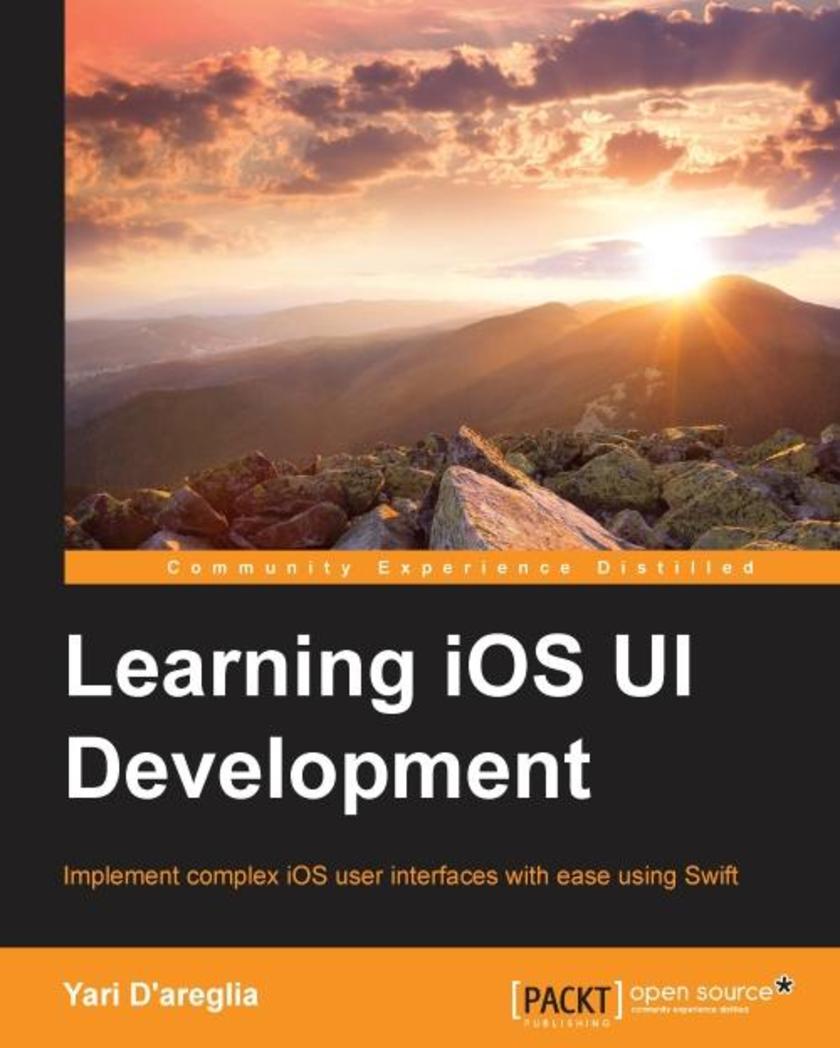
Learning iOS UI Development
¥54.49
Implement complex iOS user interfaces with ease using Swift About This Book Build compelling user interfaces that users will enjoy using the iOS UIKit frameworkMake your iOS apps easily recognizable and familiar with the UIKit frameworkUse this comprehensive, step-by-step guide to create a complete custom layoutWho This Book Is ForThis easy-to-follow guide is perfect for beginner-level iOS developers who want to become proficient in user interface development. It would also be useful for experienced iOS developers who need a complete overview of this broad topic all in one place, without having to consult various sources.What You Will LearnUnderstand the basic requirements to work with iOS user interfacesGet to know about the UI tools, frameworks, and built-in componentsPlot dynamic layout structures using Auto LayoutShape and implement adaptive user interfaces for different screen sizesDraw and animate your user interfaces using the CALayer and UIKit animationsIntercept and handle user touches to create user interface interactivity Create and depict totally custom controls Design with iOS through Core Graphics In Detail Through this comprehensive one-stop guide, you’ll get to grips with the entire UIKit framework and in a flash, you’ll be creating modern user interfaces for your iOS devices using Swift. Starting with an overview of the iOS drawing system and the available tools, you will then learn how to use these technologies to create adaptable layouts and custom elements for your applications. Next, you’ll be introduced to other topics such as animation and code-drawing with Core Graphics, which will give you all the knowledge you need to create astonishing user interfaces. By the end of this book, you will have a solid foundation in iOS user interface development and will have gained valuable insights on the process of building firm and complex UIs. Style and approach This concise yet information-packed guide is full of step-by-step instructions and screenshots of real-life examples, delivered in a direct manner, to get you creating modern user interfaces for your iOS devices using SWIFT in no time.
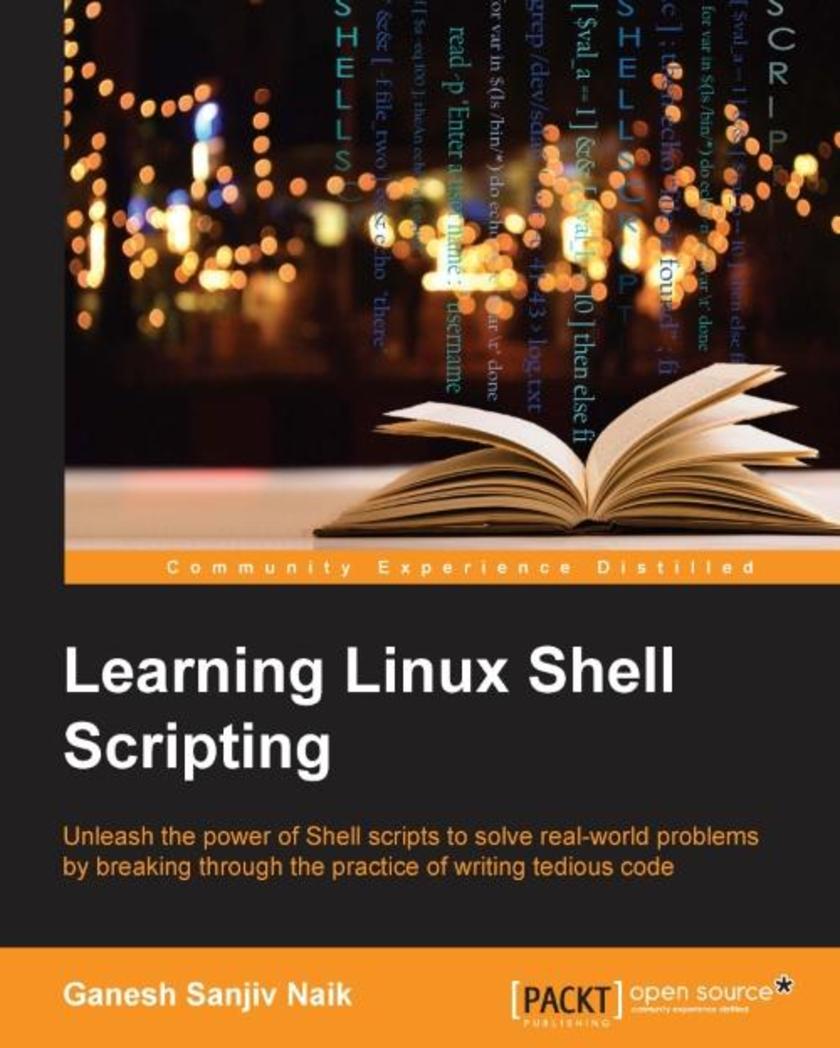
Learning Linux Shell Scripting
¥90.46
Unleash the power of shell *s to solve real-world problems by breaking through the practice of writing tedious code About This Book Learn how to efficiently and effectively build shell *s and develop advanced applications with this handy book Develop high quality and efficient solutions by writing professional and real-world *s, and debug *s by checking and shell tracing A step-by-step tutorial to automate routine tasks by developing *s from a basic level to very advanced functionality Who This Book Is For This book is ideal for those who are proficient at working with Linux and who want to learn about shell *ing to improve their efficiency and practical skills. By the end of this book, you will be able to confidently use your own shell *s in the real world. What You Will Learn Familiarize yourself with the various text filtering tools available in Linux Combine the fundamental text and file processing commands to process data and automate repetitive tasks Understand expressions and variables and how to use them practically Automate decision-making and save a lot of time and effort of revisiting code Get to grips with advanced functionality such as using traps and signals and using dialogs to develop screens Start up a system and customize a Linux system Take an in-depth look at regular expressions and pattern matching to understand the capabilities of *ing In Detail Linux is the one of the most powerful and universally adopted OSes. Shell is a program that gives the user direct interaction with the operating system. Scripts are collections of commands that are stored in a file. The shell can read this file and act on the commands as if they were typed on the keyboard. Shell *ing is used to automate day-to-day administration, and for testing or product development tasks.This book covers Bash, GNU Bourne Again SHell, preparing you to work in the exciting world of Linux shell *ing. We start with an introduction to the Shell environment and explain basic commands used in Shell. Next we move on to check, kill, and control the execution of processes in Linux OS. Further, we teach you about the filter tools available in Linux and explain standard output and standard errors devices.Then we will ensure you understand Shell’s interpretation of commands and get a firmer grasp so you use them in practice. Next, you’ll experience some real-world essentials such as debugging and perform Shell arithmetic fluently. Then you’ll take a step ahead and learn new and advanced topics in Shell *ing, such as starting up a system and customizing a Linux system. Finally, you’ll get to understand the capabilities of *ing and learn about Grep, Stream Editor, and Awk.Style and approach This practical book will go from the very basics of shell *ing to complex, customized automation. The idea behind this book is to be as practical as possible and give you the look and feel of what real-world *ing is like.
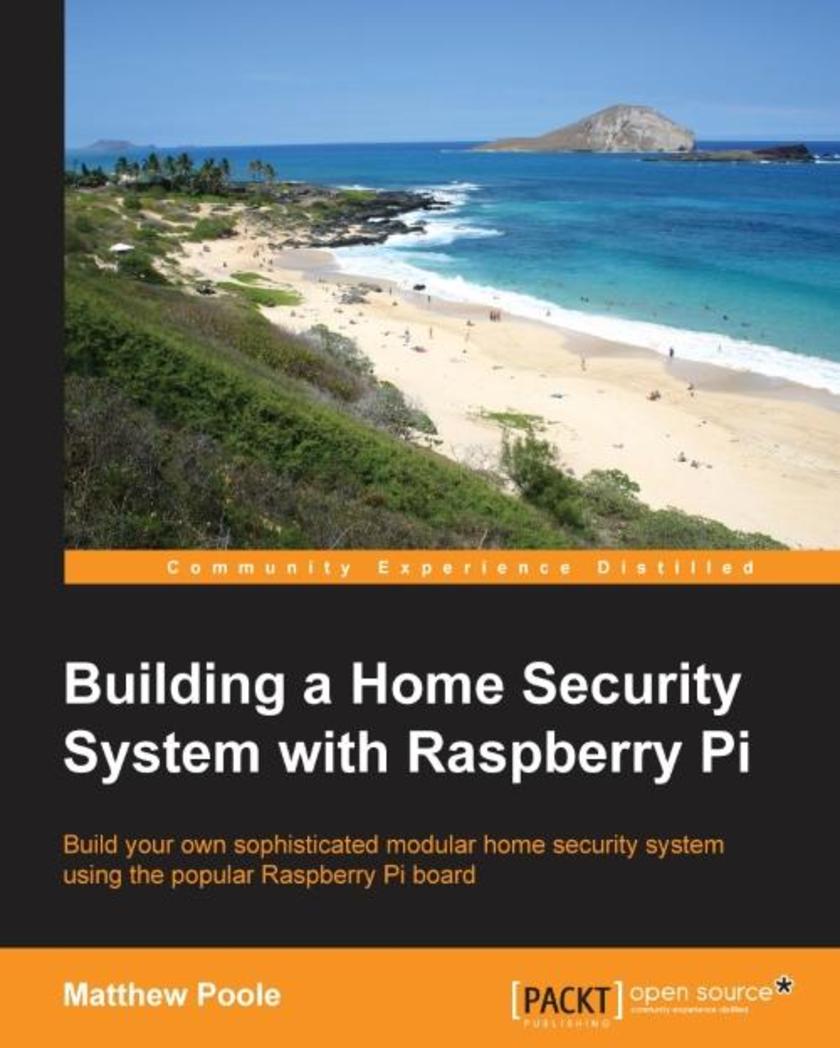
Building a Home Security System with Raspberry Pi
¥63.21
Build your own sophisticated modular home security system using the popular Raspberry Pi board About This Book This book guides you through building a complete home security system with Raspberry Pi and helps you remotely access it from a mobile device over the Interne It covers the fundamentals of interfacing sensors and cameras with the Raspberry Pi so that you can connect it to the outside world It follows a modular approach so that you can choose the modules and features you want for your customized home security system Who This Book Is For This book is for anyone who is interested in building a modular home security system from scratch using a Raspberry Pi board, basic electronics, sensors, and simple *s. This book is ideal for enthusiastic novice programmers, electronics hobbyists, and engineering professionals. It would be great if you have some basic soldering skills in order to build some of the interface modules. What You Will Learn Understand the concepts behind alarm systems and intrusion detection devices Connect sensors and devices to the on-board digital GPIO ports safely Monitor and control connected devices easily using Bash shell *ing Build an I/O port expander using the I2C bus and connect sensors and anti-tamper circuits Capture and store images using motion detectors and cameras Access and manage your system remotely from your mobile phone Receive intrusion alerts and images through your e-mail Build a sophisticated multi-zone alarm system In Detail The Raspberry Pi is a powerful low-cost credit-card-sized computer, which lends itself perfectly as the controller for a sophisticated home security system. Using the on-board interfaces available, the Raspberry Pi can be expanded to allow the connection of a virtually infinite number of security sensors and devices. The Raspberry Pi has the processing power and interfaces available to build a sophisticated home security system but at a fraction of the cost of commercially available systems. Building a Home Security System with Raspberry Pi starts off by showing you the Raspberry Pi and how to set up the Linux-based operating system. It then guides you through connecting switch sensors and LEDs to the native GPIO connector safely, and how to access them using simple Bash *s. As you dive further in, you’ll learn how to build an input/output expansion board using the I2C interface and power supply, allowing the connection of the large number of sensors needed for a typical home security setup. In the later chapters of the book, we'll look at more sophisticated topics such as adding cameras, remotely accessing the system using your mobile phone, receiving intrusion alerts and images by e-mail, and more. By the end of the book, you will be well-versed with the use of Raspberry Pi to power a home-based security system that sends message alerts whenever it is triggered and will be able to build a truly sophisticated and modular home security system. You will also gain a good understanding of Raspberry Pi's ecosystem and be able to write the functions required for a security system. Style and approach This easy-to-follow guide comprises a series of projects, where every chapter introduces a new concept and at the end of the book, all these concepts are brought together to create an entire home security system. This book features clear diagrams and code every step of the way.
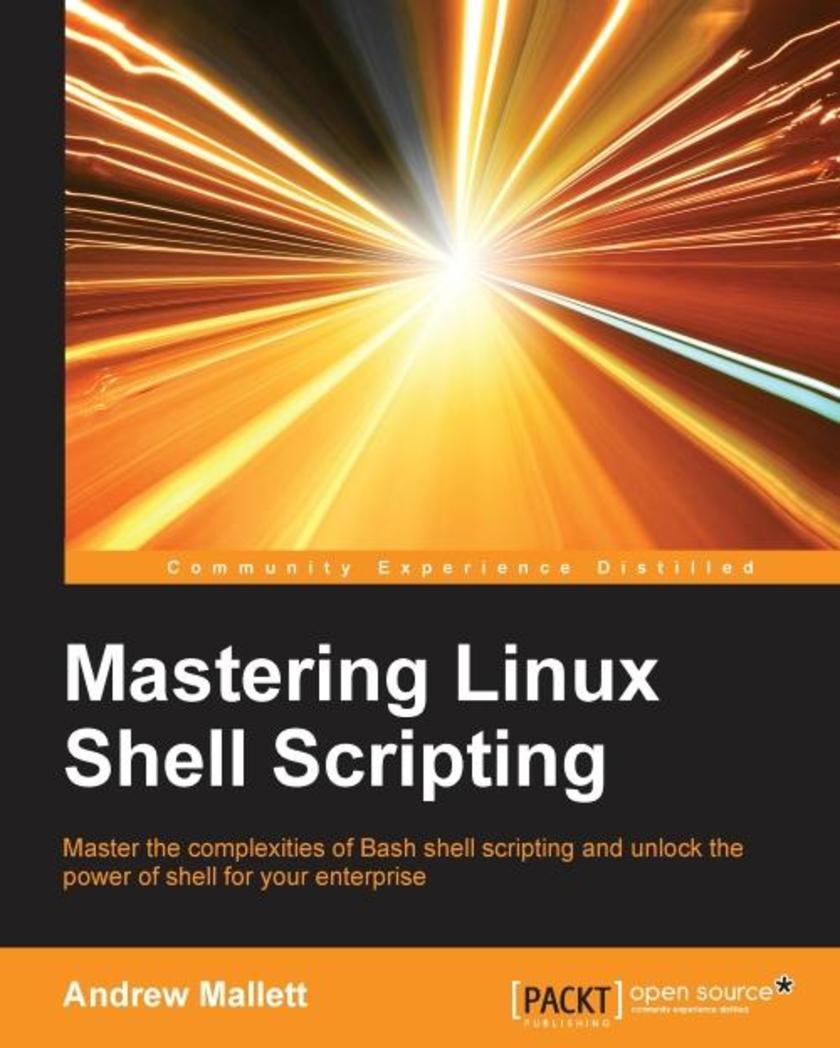
Mastering Linux Shell Scripting
¥63.21
Master the complexities of Bash shell *ing and unlock the power of shell for your enterprise About This Book Identify the high level steps such as verifying user input, using command lines and conditional statements in creating and executing simple shell *s Create and edit dynamic shell *s to manage complex and repetitive tasks Learn about *ing in Perl and programming in Python as a BASH *ing alternative with this practical, step-by-step guide Who This Book Is For Mastering Linux Shell Scripting has been written for Linux administrators who want to automate tasks in their daily lives, saving time and effort. You’ll need to have command-line experience and be familiar with the tasks that you need to automate. What You Will Learn Use the type command to identify the order of command evaluation Create interactive *s that prompt for user input Foster menu structures for operators with little command-line experience Develop *s that dynamically edit web configuration files to produce a new virtual host Write *s that use AWK to search and reports on log files Draft effective *s using functions as building blocks, reducing maintenance and build time Make informed choices by comparing different * languages such as Perl and Python with BASH In Detail Shell *ing is a quick method to prototype a complex application or a problem by automating tasks when working on Linux-based systems. Using both simple one-line commands and command sequences complex problems can be solved with ease, from text processing to backing up sysadmin tools. In this book, you’ll discover everything you need to know to master shell *ing and make informed choices about the elements you employ. Get to grips with the fundamentals of creating and running a * in normal mode, and in debug mode. Learn about various conditional statements' code snippets, and realize the power of repetition and loops in your shell *. Implement functions and edit files using the Stream Editor, * in Perl, program in Python – as well as complete coverage of other *ing languages to ensure you can choose the best tool for your project. Style and approach The book will capture your attention and keep you engaged with the simplicity and clarity of each explanation. Every step is accompanied with screen captures so you can cross-check the results before moving on.
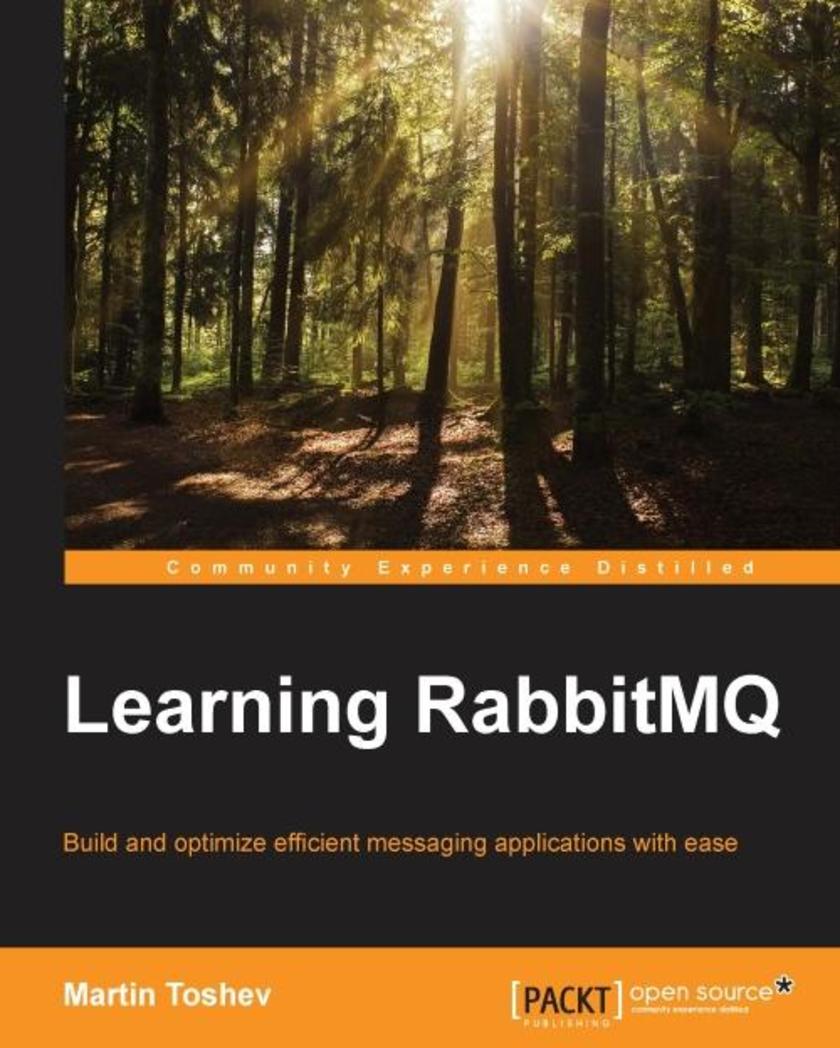
Learning RabbitMQ
¥80.65
Build and optimize efficient messaging applications with ease About This Book Learn to administer, configure, and manage RabbitMQ instances Discover ways to secure and troubleshoot RabbitMQ instances This book is fully up-to-date with all the latest changes to version 3.5 Who This Book Is For If you are a developer or system administrator with a basic knowledge of messaging who wants to learn RabbitMQ, or if you want to further enhance your knowledge in working with the message broker, then this book is ideal for you. To fully understand some examples in the book, a basic knowledge of the Java programming language is required. What You Will Learn Apply messaging patterns using the message broker Administer RabbitMQ using the command line, management Web console, or management REST services Create a cluster of scalable, and highly-available, RabbitMQ instances Use RabbitMQ with the Spring Framework, MuleESB, WSO2, and Oracle databases Deploy RabbitMQ using Puppet, Vagrant, or Docker Fine-tune the performance of RabbitMQ Monitor RabbitMQ using Nagios, Munin, or Monit Secure, troubleshoot, and extend RabbitMQ In Detail RabbitMQ is Open Source Message Queuing software based on the Advanced Message Queue Protocol Standard written in the Erlang Language. RabbitMQ is an ideal candidate for large-scale projects ranging from e-commerce and finance to Big Data and social networking because of its ease of use and high performance. Managing RabbitMQ in such a dynamic environment can be a challenging task that requires a good understanding not only of how to work properly with the message broker but also of its best practices and pitfalls. Learning RabbitMQ starts with a concise de*ion of messaging solutions and patterns, then moves on to concrete practical scenarios for publishing and subscribing to the broker along with basic administration. This knowledge is further expanded by exploring how to establish clustering and high availability at the level of the message broker and how to integrate RabbitMQ with a number of technologies such as Spring, and enterprise service bus solutions such as MuleESB and WSO2. We will look at advanced topics such as performance tuning, secure messaging, and the internals of RabbitMQ. Finally we will work through case-studies so that we can see RabbitMQ in action and, if something goes wrong, we'll learn to resolve it in the Troubleshooting section. Style and approach Each chapter of the book is an easy-to-follow guide that expands and builds on the knowledge already gained in previous chapters. Throughout the course of the book, a sample system called the CSN (Corporate Social Network) is used to illustrate the core principles described. At the end of each chapter, there is a Q&A session that covers practical questions that may arise in practice when working with RabbitMQ.
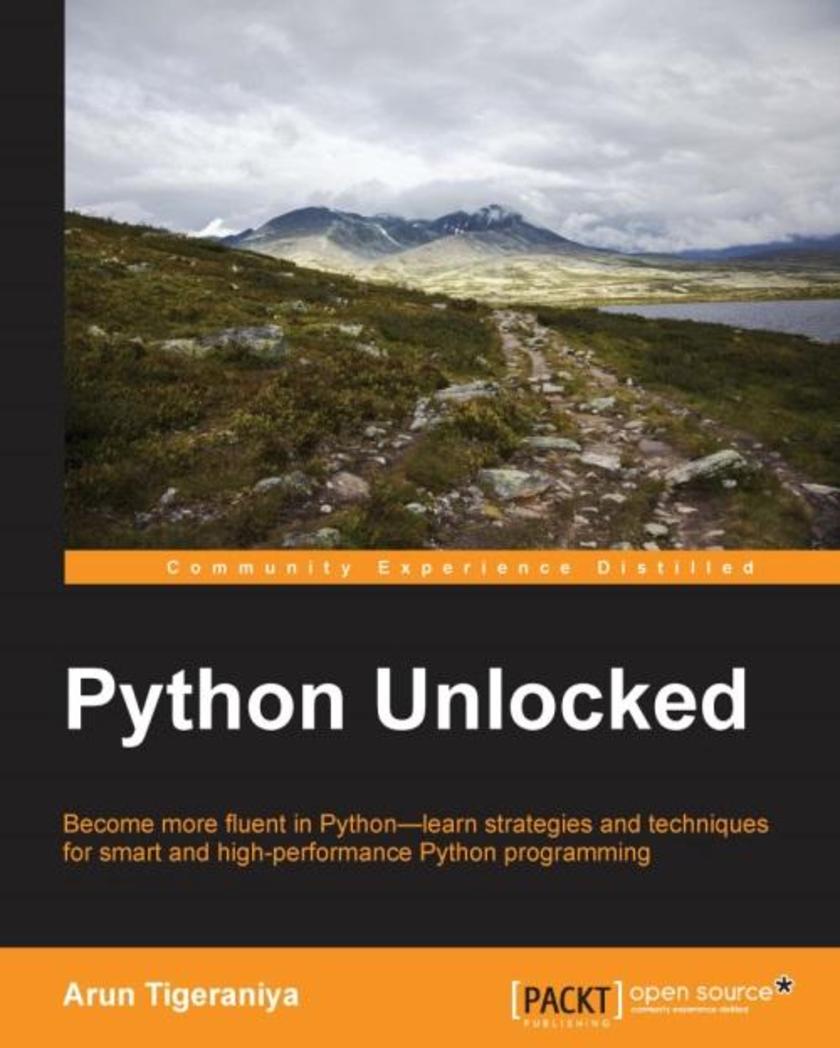
Python Unlocked
¥71.93
Become more fluent in Python—learn strategies and techniques for smart and high-performance Python programming About This Book Write smarter, bug-free, high performance code with minimal effort Uncover the best tools and options available to Python developers today Deploy decorators, design patters, and various optimization techniques to use Python 3.5 effectively Who This Book Is For If you are a Python developer and you think that you don’t know everything about the language yet, then this is the book for you. We will unlock the mysteries and re-introduce you to the hidden features of Python to write efficient programs, making optimal use of the language. What You Will Learn Manipulate object creation processes for instances, classes, and functions Use the best possible language constructs to write data structures with super speed and maintainability Make efficient use of design patterns to decrease development time and make your code more maintainable Write better test cases with an improved understanding of the testing framework of Python and unittests, and discover how to develop new functionalities in it Write fully-optimized code with the Python language by profiling, compiling C modules, and more Unlock asynchronous programming to build efficient and scalable applications In Detail Python is a versatile programming language that can be used for a wide range of technical tasks—computation, statistics, data analysis, game development, and more. Though Python is easy to learn, it’s range of features means there are many aspects of it that even experienced Python developers don’t know about. Even if you’re confident with the basics, its logic and syntax, by digging deeper you can work much more effectively with Python – and get more from the language. Python Unlocked walks you through the most effective techniques and best practices for high performance Python programming - showing you how to make the most of the Python language. You’ll get to know objects and functions inside and out, and will learn how to use them to your advantage in your programming projects. You will also find out how to work with a range of design patterns including abstract factory, singleton, strategy pattern, all of which will help make programming with Python much more efficient. Finally, as the process of writing a program is never complete without testing it, you will learn to test threaded applications and run parallel tests. If you want the edge when it comes to Python, use this book to unlock the secrets of smarter Python programming. Style and approach This is book had been created to help you to “unlock” the best ways to tackle the challenges and performance bottlenecks that many Python developers face today. The keys are supported with program examples to help you understand the concepts better and see them in action.
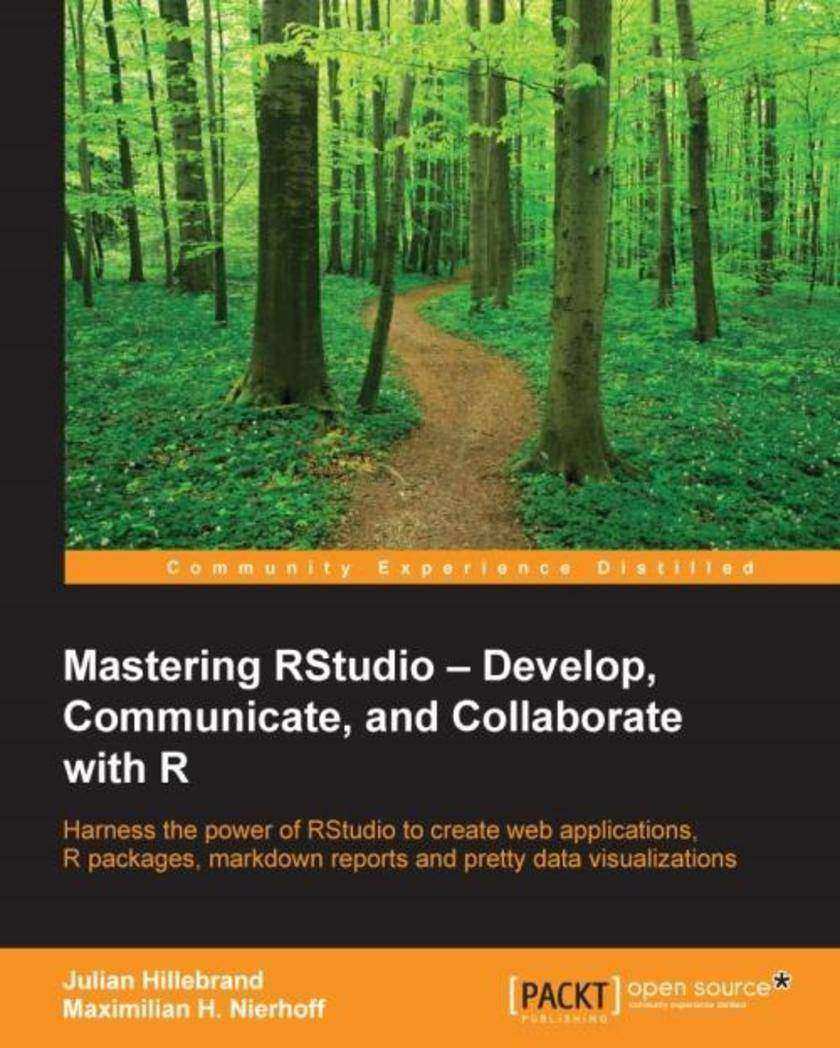
Mastering RStudio – Develop, Communicate, and Collaborate with R
¥90.46
Harness the power of RStudio to create web applications, R packages, markdown reports and pretty data visualizationsAbout This BookDiscover the multi-functional use of RStudio to support your daily work with R codeLearn to create stunning, meaningful, and interactive graphs and learn to embed them into easy communicable reports using multiple R packagesDevelop your own R packages and Shiny web apps to share your knowledge and collaborate with others.Who This Book Is ForThis book is aimed at R developers and analysts who wish to do R statistical development while taking advantage of RStudio’s functionality to ease their development efforts. R programming experience is assumed as well as being comfortable with R’s basic structures and a number of functions.What You Will LearnDiscover the RStudio IDE and details about the user interfaceCommunicate your insights with R Markdown in static and interactive waysLearn how to use different graphic systems to visualize your dataBuild interactive web applications with the Shiny framework to present and share your resultsUnderstand the process of package development and assemble your own R packagesEasily collaborate with other people on your projects by using Git and GitHubManage the R environment for your organization with RStudio and Shiny serverApply your obtained knowledge about RStudio and R development to create a real-world dashboard solutionIn DetailRStudio helps you to manage small to large projects by giving you a multi-functional integrated development environment, combined with the power and flexibility of the R programming language, which is becoming the bridge language of data science for developers and analyst worldwide. Mastering the use of RStudio will help you to solve real-world data problems.This book begins by guiding you through the installation of RStudio and explaining the user interface step by step. From there, the next logical step is to use this knowledge to improve your data analysis workflow. We will do this by building up our toolbox to create interactive reports and graphs or even web applications with Shiny. To collaborate with others, we will explore how to use Git and GitHub with RStudio and how to build your own packages to ensure top quality results. Finally, we put it all together in an interactive dashboard written with R.Style and approachAn easy-to-follow guide full of hands-on examples to master RStudio.Beginning from explaining the basics, each topic is explained with a lot of details for every feature.




 购物车
购物车 个人中心
个人中心



